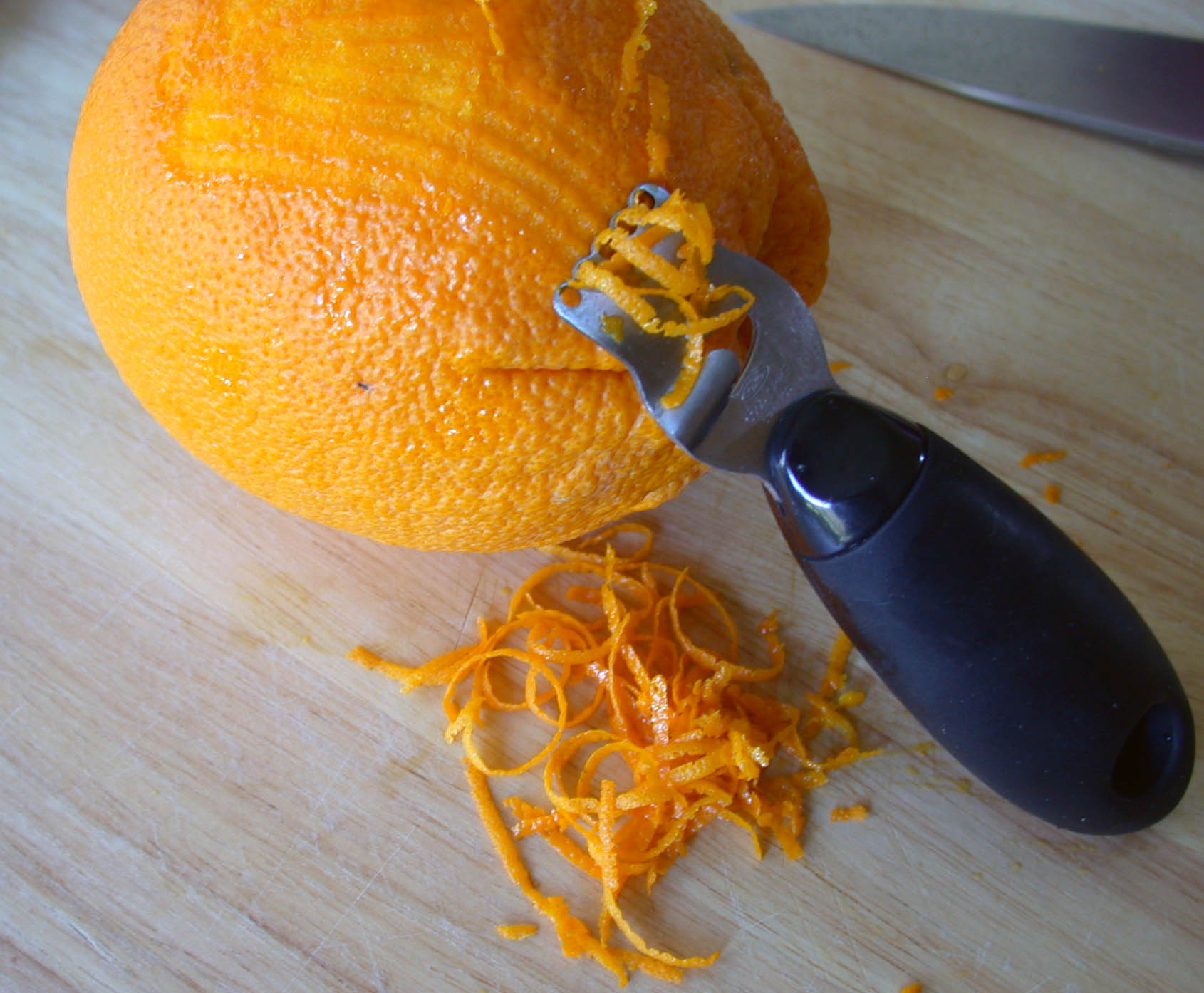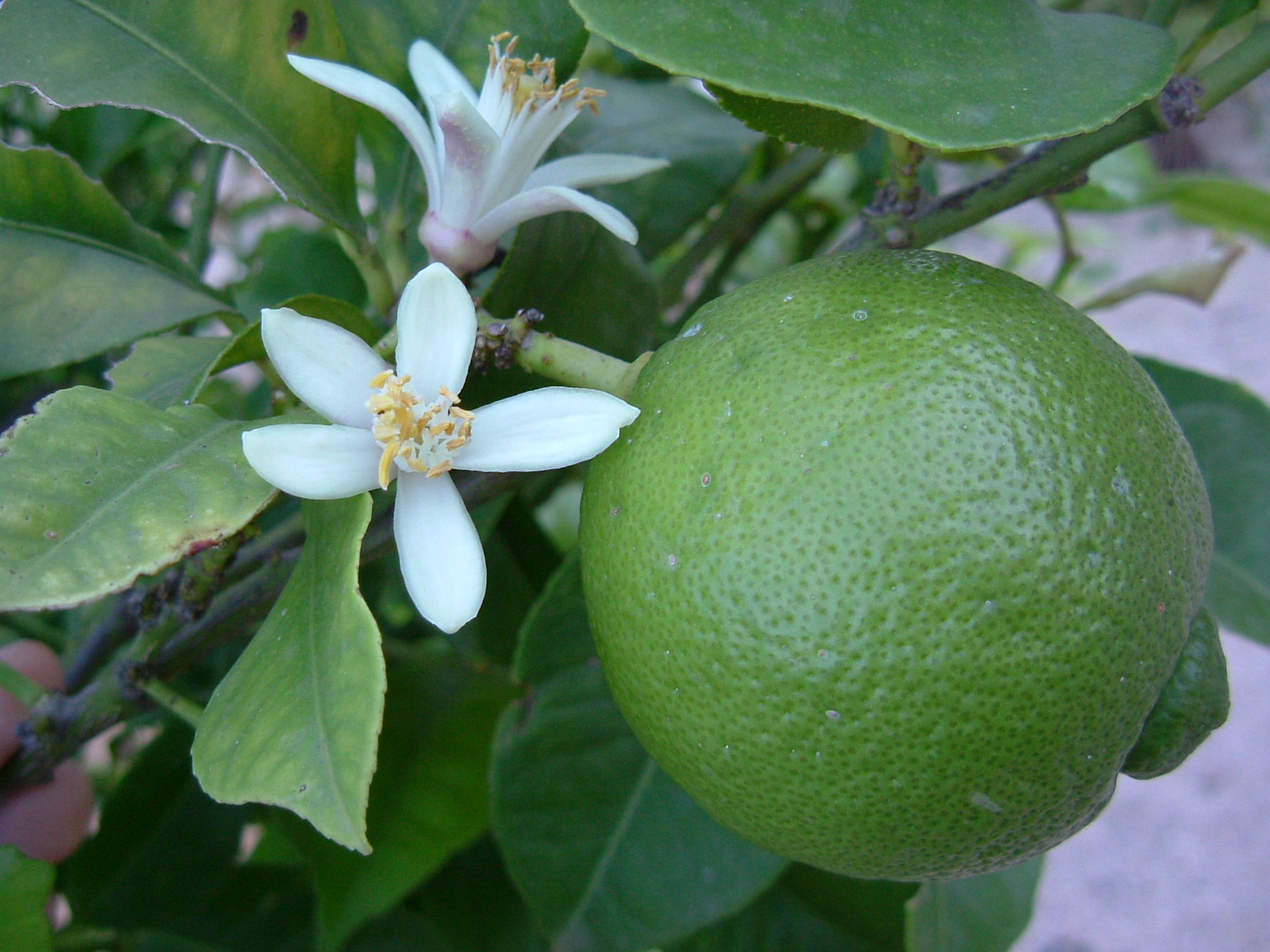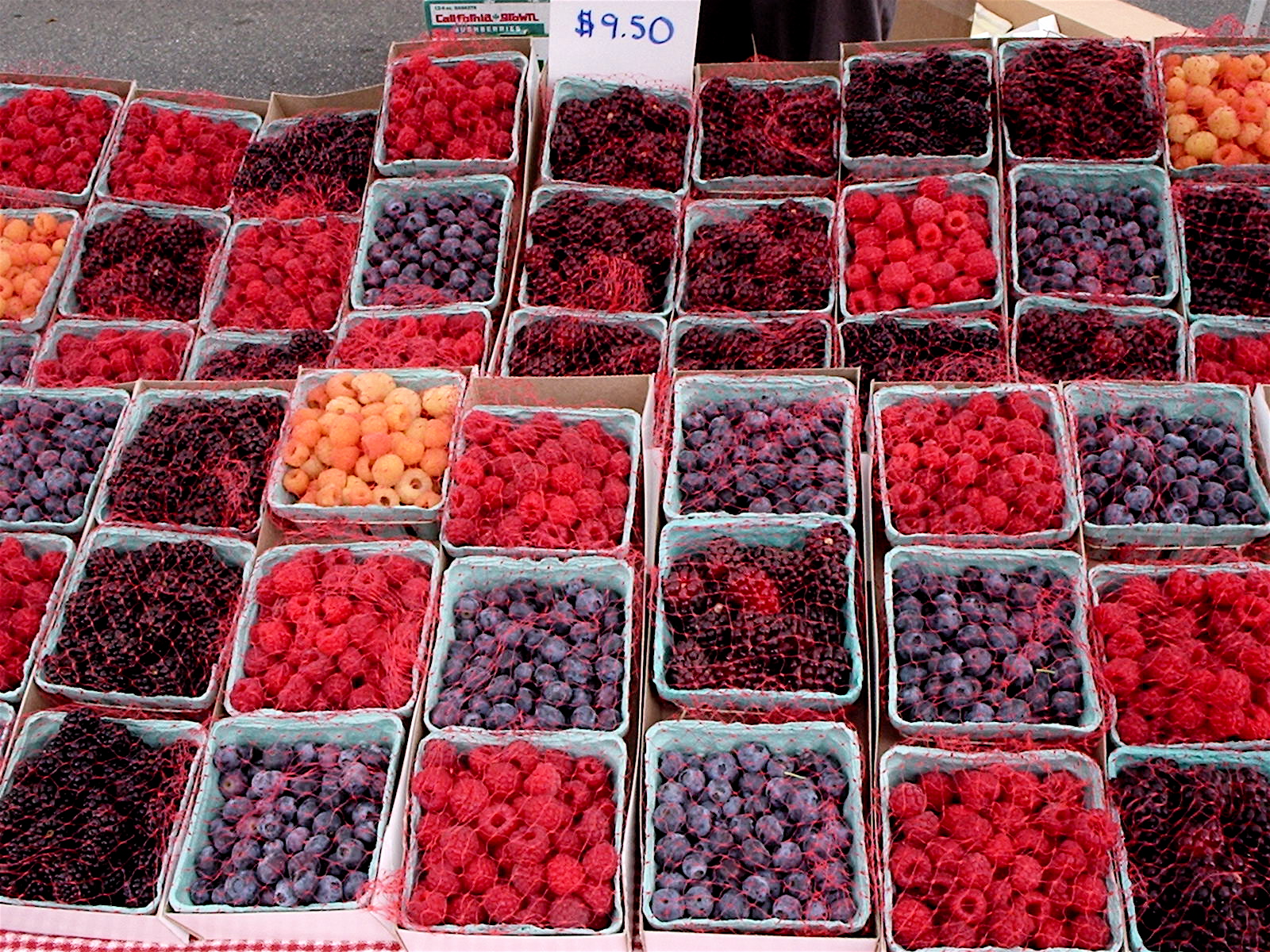|
Lemon
The lemon (''Citrus'' × ''limon'') is a species of small evergreen tree in the ''Citrus'' genus of the flowering plant family Rutaceae. A true lemon is a hybrid of the citron and the bitter orange. Its origins are uncertain, but some evidence suggests lemons originated during the 1st millennium BC in what is now northeastern India. Some other citrus fruits are called ''lemon''. The yellow fruit of the lemon tree is used throughout the world, primarily for its juice. The pulp and rind are used in cooking and baking. The juice of the lemon is about 5–6% citric acid, giving it a sour taste. This makes it a key ingredient in drinks and foods such as lemonade and lemon meringue pie. In 2022, world production was 22 million tonnes, led by India with 18% of the total. Description The lemon tree produces a pointed oval yellow fruit. Botanically this is a hesperidium, a modified berry with a tough, leathery rind. The rind is divided into an outer colored layer or ... [...More Info...] [...Related Items...] OR: [Wikipedia] [Google] [Baidu] |
Lemonade
Lemonade is a sweetened lemon-flavored drink. There are many varieties of lemonade found throughout the world. In some parts of the world, lemonade refers to an un-carbonated, traditionally, homemade drink, using lemon juice, water, and a sweetener such as cane sugar, simple syrup, maple syrup or honey. In other parts of the world, it is most commonly a reference to a carbonated lemon-flavoured soft drink or soda. Despite the differences between the drinks, each is known simply as "lemonade" in countries where it is dominant. The suffix "-ade" may also be applied to other similar drinks made with different fruits, such as limeade, orangeade, or cherryade. History A drink made with lemons, dates, and honey was consumed in Mamluk Egypt, including a lemon juice drink with sugar, known as ''qatarmizat''. The term lemonade has been used in England since 1663 and Samuel Pepys consumed it in the 1660s. In 1676, a company known as ''Compagnie de Limonadiers'' sold lemonade ... [...More Info...] [...Related Items...] OR: [Wikipedia] [Google] [Baidu] |
Lemon Meringue Pie
Lemon meringue pie is a dessert pie consisting of a shortened pastry base filled with lemon curd and topped with meringue. History Fruit desserts covered with baked meringue were found beginning in the 18th century in France. Menon's ''pommes meringuées'' are a sort of thick apple sauce or apple butter covered with baked meringue in his 1739 cookbook. A custard flavored with "citron" ('lemon') and covered with baked meringue, ''crême meringuée'', was published by 1769 in English, apparently a translation of an earlier edition of Menon (1755?). Similar recipes cooked in a crust appear in 19th century America: apple pie covered with meringue, called 'apple a la turque' (1832) and 'apples meringuées' (1846). A generic 'meringue pie' based on any pie was documented in 1860. The name 'Lemon Meringue Pie' appears in 1869, but lemon custard pies with meringue topping were often simply called lemon cream pie. In literature one of the first references to this dessert can be fou ... [...More Info...] [...Related Items...] OR: [Wikipedia] [Google] [Baidu] |
Citrus
''Citrus'' is a genus of flowering trees and shrubs in the family Rutaceae. Plants in the genus produce citrus fruits, including important crops such as oranges, mandarins, lemons, grapefruits, pomelos, and limes. ''Citrus'' is native to South Asia, East Asia, Southeast Asia, Melanesia, and Australia. Indigenous people in these areas have used and domesticated various species since ancient times. Its cultivation first spread into Micronesia and Polynesia through the Austronesian expansion (–1500 BCE). Later, it was spread to the Middle East and the Mediterranean () via the incense trade route, and from Europe to the Americas. Renowned for their highly fragrant aromas and complex flavor, citrus are among the most popular fruits in cultivation. With a propensity to hybridize between species, making their taxonomy complicated, there are numerous varieties encompassing a wide range of appearance and fruit flavors. Evolution Evolutionary history The large cit ... [...More Info...] [...Related Items...] OR: [Wikipedia] [Google] [Baidu] |
Essential Oil
An essential oil is a concentrated hydrophobic liquid containing volatile (easily evaporated at normal temperatures) chemical compounds from plants. Essential oils are also known as volatile oils, ethereal oils, aetheroleum, or simply as the oil of the plant from which they were extracted, such as oil of clove. An essential oil is essential in the sense that it contains the essence of the plant's fragrance—the characteristic fragrance of the plant from which it is derived. The term "essential" used here does ''not'' mean required or usable by the human body, as with the terms essential amino acid or essential fatty acid, which are so called because they are nutritionally required by a living organism. Essential oils are generally extracted by distillation, often by using steam. Other processes include expression, solvent extraction, '' sfumatura'', absolute oil extraction, resin tapping, wax embedding, and cold pressing. They are used in perfumes, cosmetics, soaps, ... [...More Info...] [...Related Items...] OR: [Wikipedia] [Google] [Baidu] |
Citric Acid
Citric acid is an organic compound with the formula . It is a Transparency and translucency, colorless Weak acid, weak organic acid. It occurs naturally in Citrus, citrus fruits. In biochemistry, it is an intermediate in the citric acid cycle, which occurs in the metabolism of all aerobic organisms. More than two million tons of citric acid Commodity chemicals, are manufactured every year. It is used widely as acidifier, flavoring, preservative, and chelating agent. A citrate is a derivative of citric acid; that is, the salt (chemistry), salts, esters, and the polyatomic ion, polyatomic anion found in solutions and salts of citric acid. An example of the former, a salt is trisodium citrate; an ester is triethyl citrate. When citrate anion, trianion is part of a salt, the formula of the citrate trianion is written as or . Natural occurrence and industrial production Citric acid occurs in a variety of fruits and vegetables, most notably Citrus, citrus fruits. Lemons and Lime ... [...More Info...] [...Related Items...] OR: [Wikipedia] [Google] [Baidu] |
Zest (ingredient)
Zest is a food ingredient that is prepared by scraping or cutting from the rind of fruit_waxing, unwaxed citrus, citrus fruits such as lemon, Orange (fruit), orange, citron, and Lime (fruit), lime. Zest is used to add flavor to many different types of food. In terms of fruit anatomy, the zest is obtained from the flavedo (exocarp) which is also called zest. The flavedo and white pith (Mesocarp#Mesocarp, albedo) of a citrus fruit together makes up its Peel (fruit), peel. The amounts of both flavedo and pith are variable among citrus fruits, and may be adjusted by the manner in which they are prepared. Citrus peel may commonly be used fresh, dried, candied, or pickled in salt. Preparation After any surface wax has been Fruit and vegetable wash, removed, a zester, grater, vegetable peeler, Kitchen knife#Paring, paring knife, or even a surform tool is used to scrape or cut zest from the fruit. Alternatively, the peel is sliced, then excess pith (if any) cut away. The white por ... [...More Info...] [...Related Items...] OR: [Wikipedia] [Google] [Baidu] |
Lime (fruit)
A lime is a citrus fruit, which is typically round, lime (color), lime green in colour, in diameter, and contains acidic juice vesicles. There are several species of citrus trees whose fruits are called limes, including the Key lime (''Citrus aurantiifolia''), Persian lime, kaffir lime, finger lime, blood lime, and Citrus glauca, desert lime. Limes are a rich source of vitamin C, are sour, and are often used to accent the flavours of foods and beverages. They are grown year-round. Plants with fruit called "limes" have diverse genetic origins; limes do not form a monophyletic group. The term ''lime'' originated in other languages (from French language, French , from Arabic , from Persian language, Persian , ). Plants known as "lime" The difficulty in identifying exactly which species of fruit are called lime in different parts of the English-speaking world (the same problem applies to synonyms in other European languages) is increased by the botanical complexity of the ''Citru ... [...More Info...] [...Related Items...] OR: [Wikipedia] [Google] [Baidu] |
Citron
The citron (''Citrus medica''), historically cedrate, is a large fragrant citrus fruit with a thick Peel (fruit), rind. It is said to resemble a 'huge, rough lemon'. It is one of the Citrus taxonomy#Citrons, original citrus fruits from which all other citrus types developed through natural hybrid speciation or artificial Hybrid (biology), hybridization. Though citron cultivars take on a wide variety of physical forms, they are all closely related genetically. It is used in Asian and Mediterranean cuisine, traditional medicines, perfume, and religious rituals and offerings. Hybrids of citrons with other citrus are commercially more prominent, notably lemons and many Lime (fruit), limes. Etymology The fruit's name is derived from the Latin ''citrus'', which is also the origin of the genus name. Other languages A source of confusion is that '':wikt:citron, 'citron''' in French and English are false friends, as the French word '''citron''' refers to what in English is a lemon; ... [...More Info...] [...Related Items...] OR: [Wikipedia] [Google] [Baidu] |
Juice Vesicles
The juice vesicles, also known as citrus kernels (in aggregate, citrus pulp), of a citrus fruit are the membranous content of the fruit's endocarp. The vesicles contain the juice of the fruit and appear shiny and saclike. Vesicles come in two shapes: the superior and inferior, and these are distinct. Citrus fruits with more vesicles generally weigh more than those with fewer vesicles. Fruits with many segments, such as the grapefruit or pomelo, have more vesicles per segment than fruits with fewer segments, such as the kumquat and mandarin. Each vesicle in a segment in citrus fruits has approximately the same shape, size, and weight. About 5% of the weight of an average orange is made up of the membranes of the juice vesicles. Juice vesicles of the endocarp contain the components that provide the aroma typically associated with citrus fruit. These components are also found in the flavedo oil sacs. The vesicles and their inner juices contain many vitamins and minerals as well a ... [...More Info...] [...Related Items...] OR: [Wikipedia] [Google] [Baidu] |
Locule
A locule (: locules) or loculus (; : loculi) is a small cavity or compartment within an organ or part of an organism (animal, plant, or fungus). In angiosperms (flowering plants), the term ''locule'' usually refers to a chamber within an ovary (gynoecium or carpel) of the flower and fruits. Depending on the number of locules in the ovary, fruits can be classified as (uni-locular), , , or . The number of locules present in a gynoecium may be equal to or less than the number of carpels. The locules contain the ovules or seeds. The term may also refer to chambers within anthers containing pollen. In ascomycetous fungi, locules are chambers within the hymenium The hymenium is the tissue layer on the hymenophore of a fungal fruiting body where the cells develop into basidia or asci, which produce spores. In some species all of the cells of the hymenium develop into basidia or asci, while in oth ... in which the perithecia develop. References Plant anatomy Plant ... [...More Info...] [...Related Items...] OR: [Wikipedia] [Google] [Baidu] |
Phytochemical
Phytochemicals are naturally-occurring chemicals present in or extracted from plants. Some phytochemicals are nutrients for the plant, while others are metabolites produced to enhance plant survivability and reproduction. The fields of extracting phytochemicals for manufactured products or applying scientific methods to study phytochemical properties are called ''phytochemistry''. An individual who uses phytochemicals in food chemistry manufacturing or research is a ''phytochemist''. Phytochemicals without a nutrient definition have no confirmed biological activities or proven health benefits when consumed in plant foods. Once phytochemicals in a food enter the digestion process, the fate of individual phytochemicals in the body is unknown due to extensive metabolism of the food in the gastrointestinal tract, producing phytochemical metabolites with different biological properties from those of the parent compound that may have been tested in vitro. Further, the bioavaila ... [...More Info...] [...Related Items...] OR: [Wikipedia] [Google] [Baidu] |
Carpel
Gynoecium (; ; : gynoecia) is most commonly used as a collective term for the parts of a flower that produce ovules and ultimately develop into the fruit and seeds. The gynoecium is the innermost whorl of a flower; it consists of (one or more) '' pistils'' and is typically surrounded by the pollen-producing reproductive organs, the stamens, collectively called the androecium. The gynoecium is often referred to as the "female" portion of the flower, although rather than directly producing female gametes (i.e. egg cells), the gynoecium produces megaspores, each of which develops into a female gametophyte which then produces egg cells. The term gynoecium is also used by botanists to refer to a cluster of archegonia and any associated modified leaves or stems present on a gametophyte shoot in mosses, liverworts, and hornworts. The corresponding terms for the male parts of those plants are clusters of antheridia within the androecium. Flowers that bear a gynoecium but no stame ... [...More Info...] [...Related Items...] OR: [Wikipedia] [Google] [Baidu] |







